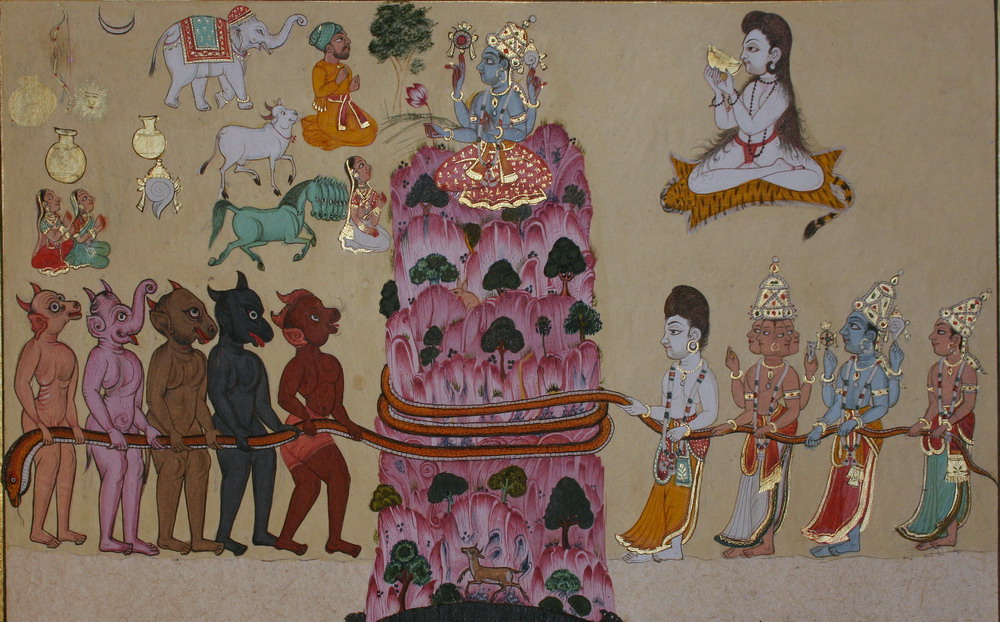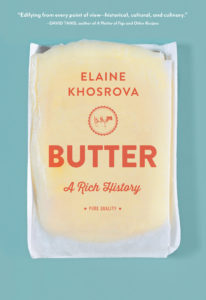
A woman making butter, Paris 1499.
By Elaine Khosrova (Guest Contributor)
In modern times, butter has become a commodity that serves primarily a culinary purpose. But for many of our early ancestors, this dairy fat (and its derivative, ghee) also had another role—a sacred one. As a kind of metaphysical actor, butter stars in numerous religious mythologies and rituals created by civilizations long ago. These narratives were central to early man’s quest for existential meaning, if not answers. Because butter was often perceived as a divine mystery in itself (hidden in milk and temperamental to produce), it was naturally cast in many sacred liturgies.
Sumerian clay tablets from 2500 BCE, for instance, describe a well-established cult whose followers brought regular offerings of butter to their temple in order to satisfy the dairy desires of the goddess Inanna. Sumerian writings also reveal a reverence for the act of buttermaking, in passages like, “The rocking of the churn will sing for you, Inanna . . . thus making you joyous.”
Among the Vedic Aryans of the Indus River Valley, butter was a centerpiece of religious ritual. Throughout their Sanskrit texts from
500 BCE and earlier, we see butter referred to often and reverently. In one hymn dedicated to Agni, the fire god, a verse is recited while melted butter or ghee is used to feed tall flames: “ . . . these waves of Butter flow like gazelles before the hunter . . . Streams of Butter caress the burning wood. Agni, the fire, loves them and is satisfied.”

The Vedas formed the foundation of what would later constitute Hindu mythology, so it’s no surprise that butter and ghee figure in those stories as well. One classic tale features Vasuki, the Snake God, acting as a rope to spin Mandhara, a mythological mountain, like the plunger in a butter churn. Together they heroically churn an ocean of milk into blessed talismans and creatures. The story personifies the Hindu belief that butter/ghee is hidden in milk like the divine Lord is hidden in all creation; spiritual work and its rewards are symbolized by the hard job of churning.
One of the more popular narratives in Hindu mythology continues to be celebrated today. It describes the boyish mischief of Lord Krishna in his predilection for stealing ghee and yogurt (dahi) from the milkmaid’s hanging pots. (He is affectionately nicknamed makhan chor, the butter thief). Each year, during the festive commemoration of his birthday, known as Janmashtami, modern-day Hindus re-enact Krishna’s antics by hanging pots of yogurt and ghee atop street poles and forming human pyramids to reach them. It’s all done for fun, though the playful metaphor is nonetheless profound: Higher purpose rewards us with a rich spiritual life.
 Elaine Khosrova is an award-winning food writer and editor, and the author of Butter, A Rich History, published in 2016 by Algonquin Books. She continues to hunt down butter’s cultural stories, past and present, and welcomes any leads at @butterdishing
Elaine Khosrova is an award-winning food writer and editor, and the author of Butter, A Rich History, published in 2016 by Algonquin Books. She continues to hunt down butter’s cultural stories, past and present, and welcomes any leads at @butterdishing

